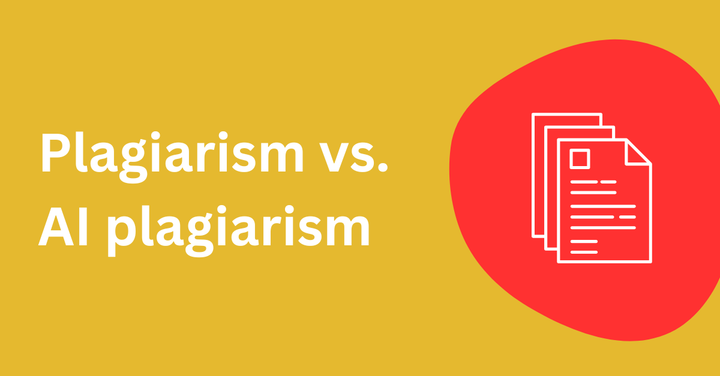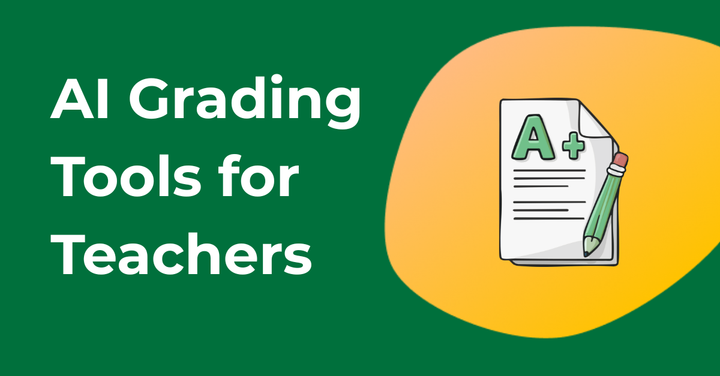AI Conversations with Teachers: Henna Punjabi

For today's iteration of 'AI Conversations with Teachers,' I am speaking with Henna Punjabi. Henna is an Instructional Designer for Texas State University Libraries, with a passion for creating online curricula that effectively help students learn. Having experienced the highs and lows of online education as a student during COVID-19, Henna has a unique perspective on the importance of designing educational content that is engaging and effective. With her expertise in instructional design, she is well-equipped to address concerns surrounding AI in education and find innovative solutions to improve the learning experience for both students and faculty.
Q: Could you first tell me about yourself, like who you are and what your background is?
A: My name is Henna, and I am an Instructional Designer for Texas State University Libraries. I work to create online curricula to help our faculty and librarians teach research instruction to their students. We're currently changing our library instruction model, and for the fall semester, we have an instruction team where a ton of librarians will address each instruction session. These sessions are centered around research for those courses, finding database tools, what makes a good source, information literacy, digital literacy, etc. We have almost 1,000 freshmen beginning this fall, and we have an overwhelming amount of requests. It's very difficult to keep up, so we've been working on creating digital learning objects that we can reuse and teach that content more effectively. Instead of having to go to each classroom and teach Boolean searching, we're able to create a digital learning object on Boolean searching and reuse that in multiple classrooms. Students can complete that before we go into the classroom, so our students are able to do a flipped classroom model. My role in that is creating digital content.
Q: What problems have you been facing with AI, so far?
A: In the past semester, particularly in the spring, we had a lot of faculty, particularly English faculty, who were very concerned about ChatGPT and what that means for their coursework. In one instance, we had some students who were using ChatGPT to search for sources and then giving us incorrect sources. They were basically making up research articles. This meant that faculty had to double-check every source mentioned in every single one of their students' papers, which tripled and quadrupled their workload. This has been affecting how we teach good research skills, because we don't want students to think that ChatGPT is a way to find an article because it is giving them false information and increasing the workload for faculty.
When I was at Edward at the constructor con and we talked about GPTZero, it was very interesting because I think that this kind of problem gets to fight on two sides. One side is talking to the students about what it means to find a good source and how to go about that easily. ChatGPT makes things easy, so we need to help students feel empowered to find their sources without using it. On the other side, we need to help faculty feel secure and take off some of the burden of checking all the sources. That's where I'm coming from with all of this. It's a very weird position. I'm not a librarian myself, but I work with the librarians and the faculty to help create instructional content.
Q: What has motivated you to enter this role as an instructional design specialist for education?
A: I got into this role because I really care about online education. I was a student in college during COVID and my online experience had its highs and lows. I wanted to be in a position where I could create online content that was good and actually helped students learn. My experience with online education as a student has really influenced my instructional design work. When working with faculty, I try to incorporate my experience to influence their work as well.
In particular, when it comes to modalities, there are a lot of different options such as audio, video, kinesthetic, and visual. It can be intimidating to have to pick just one, but because I am part of creating the online content, I have access to all of them. Being in the position of designing the curriculum is really cool because I feel like I'm able to have that respect with faculty and librarians, and say, "Hey, this is how students learn. This is the best way to design curriculum and learning modules using different modalities."
I feel like I'm able to have an influence on the instructors and faculty, which is a little bit different, but really rewarding.
Q: What tools are you guys considering right now to combat the use of ChatGPT?
A: Right now, we are using H5P to teach, which is another aspect of what I do that's very different from what a lot of other instructional designers do. We're not very focused on grading or scoring students for understanding, because we're teaching research and not necessarily teaching them to memorize information. At the end of the day, they prove that they can do something by producing a research paper, which is a very different level of assessment. We use H5P, an open-source, interactive activity platform that allows us to create interactive HTML5 activities without the quiz aspect. I feel like this approach gives students less anxiety and pressure to perform well and get a perfect score, allowing them to engage with the material and learn better. We're currently in a position where we have a week until school starts, and everything's on fire. We're just trying to get everything together right now. One thing we're doing as we go into the semester is preparing library guides focused on ChatGPT and what that means for the classroom and library research. However, it's one of those things where there's not enough information yet, and the school year has snuck up so fast that we're very focused on trying to figure out what we're going to do. My biggest worry is that we'll get to October, and students will start working on their big essays for the year, and we'll have an influx of faculty who are worried about students using ChatGPT. We won't know how to help them in a sustainable way because simply looking at a single source is not sustainable for a lot of our larger classes.
Q: What are the current problems with verifying sources that professors face?
A: Our faculty could look up every source. That's absolutely possible. But we have some faculty who literally have like hundreds of like hundreds of students, and so if they're doing it for their hundreds of students, and each student uses five sources per paper, that's 1000s of articles. And so at that point, it's not because it's the sustainability aspect. That's what we have our faculty were doing in the spring, where we have one faculty member who was concerned about this, and so she looked up every single one. How many faculty how many students that she taught, but it was definitely it added a lot of burden to her workload. And the thing is, with the library, are are places research, which is good. We've been really trying to strive to be the Resource Center of the University. But then in the spring, we had faculty coming to us like, hey, how do you help? How do we fix this? It was very difficult because we were like, We're also just now learning about this. We're all in the same boat. We all don't know what to do. And so just I've been very quick to just kind of try to learn as much as I can just so that way I can have more knowledge when talking to our librarians especially because, again, our librarians are the ones who are most of the top faculty and just helping them feel like they can provide their faculty answers because there are faculty could search everything. It just it's sustainable for some but not for others. And a lot of faculty just don't want
Q: Why is the difficulty with bibliographies generated by ChatGPT so nuanced?
A: The intense verification part is what makes it difficult. The bibliography generated by ChatGPT could be an entirely false source or could be very hard to find and verify. ChatGPT could also generate a real source with a fake quote or the incorrect author. The citation could also be incorrect. There are so many layers and things that could go wrong. It's challenging to check for all of that for every single source for every single student. Faculty often don't know what to do and it brings up many questions and concerns.
Q: Why don't teachers enforce that students provide evidence of their own sources instead?
A: The problem is that students don't know if ChatGPT is a correct or incorrect source. The students aren't aware of it. And so they're not necessarily going in with the intention to try and trick their professors into thinking that it's a real source when it's fake. But ChatGPT is able to give them not only a source but also reasoning behind it and give it to them in layman's language. There's a lot of academic jargon that can be a barrier to reading academic journals and articles. ChatGPT can simplify the language for them, but unknowingly gives them false information. It really does come back to information literacy and misinformation versus disinformation. Even if a faculty member asked how to find a source, they could say Google Scholar or the library website. If they said check ChatGPT, the professor would need to go and check all those sources down, but it would still not provide accurate information. I don't think the students are aware that it's pumping out fake sources. I think back to when I was a student, and I can see how a student would find it appealing to find something that's going to put it into easier words. ChatGPT is simplifying the research process in an incorrect and misinformed way. It's not providing accurate information.
Q: So, for the most part, you don't believe students are using ChatGPT with an intent to decieve?
A: I don't think it is always malicious intent. COVID shed light on many other long-standing problems, such as our non-functioning healthcare system. COVID was a problem that exposed many symptoms of things that weren't working. This ChatGPT incident highlights how desperate students are to get good grades, how difficult it can be to read through academic jargon, and how overwhelmed our faculty are with grading. We have 1000 students starting this fall, and it's a very easy solution to a much larger problem. Students are overloaded and working multiple jobs to stay in school, so they don't have time to do their research papers. Our faculty also don't want to interface with too many students to check that all the sources are legitimate and the level of scrutiny required is high. ChatGPT is its own problem, but it sheds light on some of the other problems in academia right now.
Q: What is your stance on digital literacy with the rampant use of AI?
A: I think we should be extensively teaching digital literacy, even just from an informational standpoint. It's important to teach students about internet privacy and how AI can impact it. My biggest concern with AI is copyright and plagiarism. The difficulty with AI is that it uses works and data without the creator's consent, which poses legal problems. It's important to educate students on what AI means and to watch how copyright cases turn out. It's about ownership and privacy, knowing that what you create is yours. We should educate our students on what AI means so they can choose whether to partake.
Q: How has AI impacted how you design your digital curriculums?
A: I think it's a big ask to redesign curriculums so that AI doesn't have too much of a hold on them. It's a lot to ask for insight from educators. However, I also think it can lead to better curriculums and more engaged students. I had a professor who allowed open notes and even Google during class. He asked difficult questions that required presence and awareness. During the first exam, I thought I could easily look up the answers, but he asked intricate questions that required knowledge of the content. I had notes on most of the questions, but the ones I didn't led me to a deep dive on Google, where I still learned the information. It was my favorite test because it was well-designed. Instructors should focus not only on helping students learn but also on helping them want to learn.


